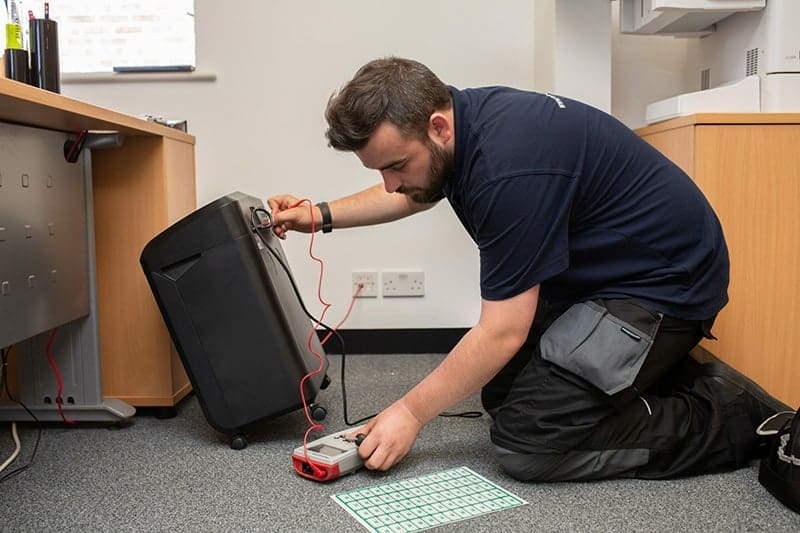
How often should you consider PAT testing equipment?
Portable Appliance Testing, otherwise known as PAT, is the process of periodically testing your electrical appliances. It helps to guarantee your electronic equipment is well maintained for safe use and ensures companies adhere to relevant health and safety regulations to keep employees out of harm’s way when in the workplace.
But, how often should you PAT test your equipment to upkeep this health and safety compliance?
How Often Does PAT Testing need to be done?
Officially, there is no set frequency for an expert to do a PAT test. That being said, the testing frequency can be determined by:
- The class of electrical appliance
- The use of the electrical appliance
- The environment where the appliance is located
- The user of the appliance
- The risk of the appliance getting damaged
For example, appliances such as power tools used at a construction site are far more likely to get damaged than a kitchen kettle in an office or school because they will see regular use, are often moved about and are subject to hazardous conditions such as the outside elements.
As a result, these two scenarios would require two very different PAT testing recurrences. How often you get your PAT testing done is entirely up to you. However, at PTS, we would recommend that you have one carried out by an expert engineer at least annually.
Annual testing will go a long way in ensuring that your equipment is checked for potential faults that could cause damage or injury and result in costly repairs, replacements, and business loss. If you’re due a PAT test, get in touch, and one of our qualified team will come out at a time that suits you.
Different classes and categories of electrical appliances
There are three different classes that each electrical item falls under, and understanding the difference between them can help you identify how often PAT testing needs to be done.
Class 1 Electrical Appliances
These electrical appliances only have basic insulation to protect the user and mainly rely on an earth connection. These appliances will require a full PAT and some examples include; kitchen appliances such as toasters, kettles, microwaves, white goods and computers.
Class 2 Electrical Appliances
These are electrical appliances where the user does not require an earth connection as at least two layers of insulation already protect them. These types of appliances will require a full PAT, and some examples include; hairdryers, televisions, and desktop printers.
Class 3 Electrical Appliances
These electrical appliances are low voltage and are considered the safest. As such, they typically won’t require PAT testing, but their charging leads and cables may need to be tested.
What are the different electrical appliance categories?
Beyond the classes of electrical appliances, there are also different categories which require different levels of testing. For some, a visual inspection will suffice, while others need a full PAT test.
- Fixed appliances
- Stationary appliances
- IT appliances
- Moveable appliances
- Portable appliances
- Cables and chargers
- Handheld appliances
Fixed appliances require no PAT test, whereas all other categories will require PAT testing unless they are Class 2 equipment in low-risk environments. Visual inspection is suggested for all moveable, portable, handheld and cables/chargers, whereas Fixed, Stationary and IT equipment only needs to be done in higher risk environments.
Get your electrical equipment PAT tested
Regardless of how often you decide to get your workplace equipment PAT tested, you must ensure that the testing is done correctly. Our PAT test engineers assess every plug and appliance inside and out to regulation standards using approved testing equipment.
If you’re unsure whether or not your appliances are due to be PAT tested or just want to find out more information about our Portable Appliance Testing service, call us today on 0800 644 5400.
GET IN TOUCH
We endeavour to reply to you within 2 hours during normal working hours.